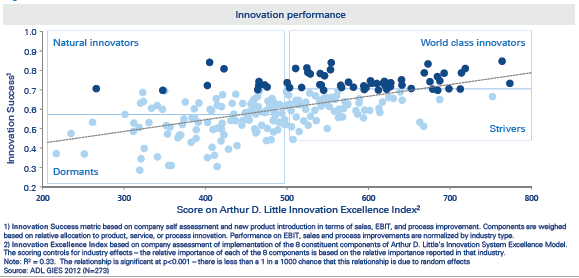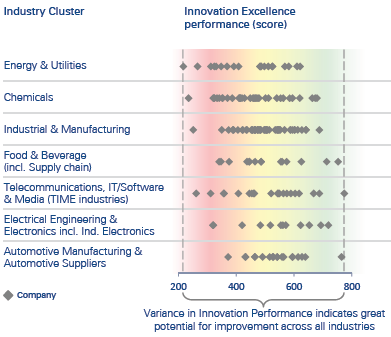When it comes to innovation and product development, the need for regulation comes from many sources. Public safety, environmental, and intellectual property issues all need to be addressed and handled in a fair manner throughout defined markets like NAFTA and the EU. Furthermore, the requirements for regulations can vary drastically across different industries. For example, when we look at the pharmaceutical industry there is a primary need to minimize hazards and ensure proper testing before approval to market. Similarly, regulation in the airplane and automotive industry comes out of a need for safety and extends throughout the entire supply chain. After all, should there be a failure, you want to make sure you can trace that part back along the supply chain to where it came from and solve the issue at the source.
The chemical industry brings together all of the complex regulatory needs of various industries under one umbrella. Chemicals are omnipresent from the cars we drive to the medicines we consume, chemicals are everywhere. For example, the average laptop computer contains more than 31 adhesives. Have you given thought to what went into the computer monitor you work on every day? Liquid Crystals, invented by Merck almost 100 years ago, are now delivered to almost 60% of the world market. What about your car? Think of chemical adhesives again - the paint, the liquids for your air conditioning, the brakes and tires. These are only a few of the examples, yet they clearly illustrate the reality that chemicals are all around us. Being so crucial to many parts of people's lives is exactly why the chemical industry is faced with the tightest set of regulation that exists.
There are some things to keep in mind when it comes to regulation in the chemical industry:
- Compliance with regional regulations is imperative to address this market;
- Compliance comes at a cost;
- Compliance will bring additional requirements to your business processes; and
- Rules change over time; typically, they will tighten.
When the EU introduced REACH 1 in 2006, it was widely assumed that this tight set of regulations (along with a feared load of bureaucracy) would shut down innovation in the chemical space altogether. Larger companies would rather invest in “de-regulated” regions, whereas smaller companies would not be able to cope with additional structures and costs forced upon them and would shrink to fit niche markets. REACH requires a rather sophisticated set of forms and processes to comply for any chemical manufactured, marketed or used in the EU.
The risk associated with the decision to ‘not comply' with REACH has come to mean you're willing to leave the EU market. If your company's growth strategy is dependent on the EU market, then your organization must be prepared to fully comply with its regional regulatory requirements. The reality is that some companies will be better prepared to adopt the bureaucratic and economic burdens associated with REACH much better than others, and that will in fact impact their ability to come up with new products or technologies.
As REACH was enacted, it was likely that many companies would adapt to the new regulations. When Arthur D. Little examined the chemical industry in their 2013 study, “Getting a Better Return on your Innovation Investments”, they discovered that the spread amongst companies on the innovation excellence performance score was quite significant.

“What is most striking is the tremendous potential for improvement of business performance through innovation. For example within the chemical cluster, the most innovative company achieves a score of 675 out of a possible 800 for innovation excellence whereas an average performer will achieve around 460. To put this into perspective, the impact of achieving top quartile innovation excellence for products with less than three years on the market would allow the same average chemical company to improve its EBIT from new products by up to 14% points, assuming it followed the same trend.”
Recent studies from the Center for International Environmental Law (CIEL) “Driving Innovation: How stronger laws help bring safer chemicals to market” (pdf) and from NESTA's Knut Blind, “The Impact of Regulation on Innovation” (pdf) suggest that, given certain preparations, tight regulations like REACH may actually fuel innovation for your company. How do companies from the chemical space make sure they fully comply with the tight regulations and at the same time boost their innovation pipeline?
When you take a closer look, Arthur D. Little identifies the following about getting the basics right:
“The implication from this is that innovation success depends first of all on getting the basics right – such as alignment with strategic and financial goals, well-managed product and service portfolio optimization… It forces technology managers to seek alignment with corporate strategy – or at least it forces a discussion on what the corporate goals are and how technology might contribute to their attainment by explicitly linking technology with products, process or changes to the business model.”
What sounds like common sense may not be so easy to achieve in a large corporation. Recently, Mercedes missed the deadline for a regulation of a new cooling fluid for the French market. Accordingly, France banned Mercedes cars containing this particular chemical from being sold in there. As a result of lack of compliance, this entire market section has been closed for Mercedes simply because they didn't align their developments and launch planning with regional requirements. The case hasn't been settled yet, but the cost involved could be well considered as “cost of non-compliance”.
In summary, research shows that successful companies embrace regulation, align it with their strategic goals and build the requirements into their operational processes. Larger companies have an advantage, since they already have the functions and the people available to cope with regulations. However, the same methods can be applied by much smaller companies using state-of-the-art-tools to level their size and boost their innovation performance.
Once you've embraced regulation, aligned your investment portfolio with your strategy, and build regulatory requirements into your operational processes, then you're in good shape to surpass your peers who are not competing with you at the same maturity level when it comes to innovation excellence!
1 REACH: EU Regulation about the Registration, Evaluation, Authorization and Restriction of all Chemicals manufactured, imported, marketed or used in the EU: “No data – No menu” policy.





